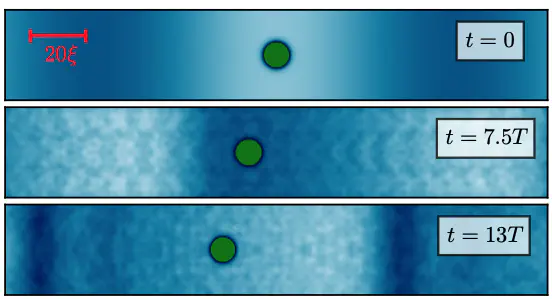
Abstract
Stokes drift is a classical fluid effect in which travelling waves transfer momentum to tracers of the fluid, resulting in a non-zero drift velocity in the direction of the incoming wave. This effect is the driving mechanism allowing particles, i.e. impurities, to be transported by the flow; in a classical (viscous) fluid this happens usually due to the presence of viscous drag forces. Because of the eventual absence of viscosity in quantum fluids, impurities are driven by inertial effects and pressure gradients only. We present theoretical predictions of a Stokes drift analogous in quantum fluids for classical impurities obtained using multi-time analytical asymptotic expansions. We find that, at the leading order, the drift direction and amplitude depend on the initial impurity position with respect to the wave phase; at the second order, dominant after averaging over initial conditions, our theoretical model recovers the classical Stokes drift but with a coefficient that depends on the relative particle-fluid density ratio. Numerical simulations of a two-dimensional Gross-Piteaveskii equation coupled with a classical impurity corroborate our findings. Our predictions are experimentally testable, for instance, using fluids of light obtained in photorefractive crystals.